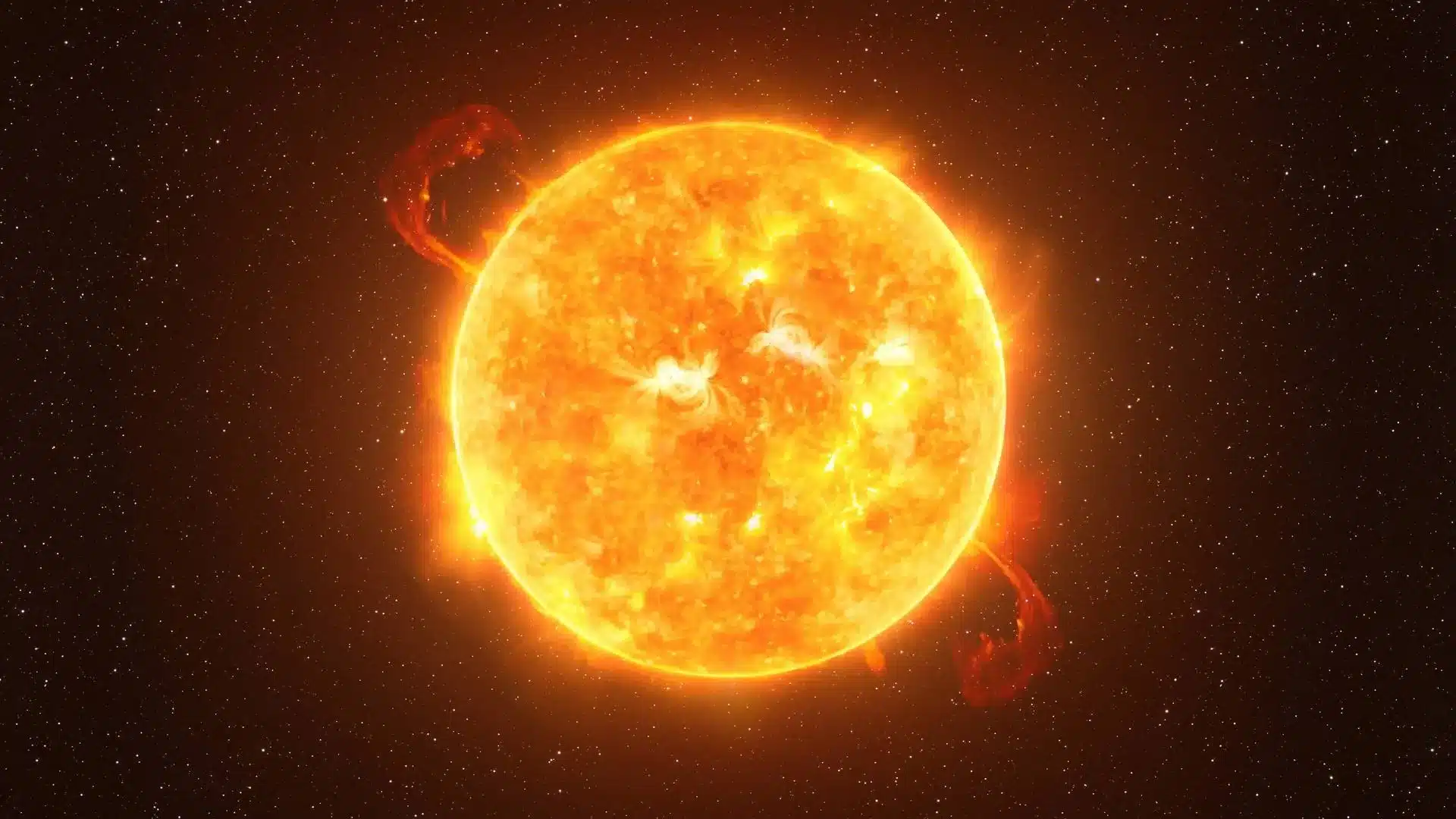About Solar Maximum
- The sun is a huge ball of electrically-charged hot gas. This charged gas moves, generating a powerful magnetic field.
- The sun goes through a natural solar cycle approximately every 11 years.
- Over the course of 11 years, the magnetic field between the Sun’s northern and southern hemispheres winds up until it becomes so dense that the hemispheres flip. The north hemisphere becomes the south, and vice versa.
- This flipping point marks the Solar Maximum. It occurs approximately halfway through the solar cycle.
- It’s associated with a greater number of sunspots observable on the surface of the sun.
- By contrast, the Solar Minimum, which marks the beginning and end of each Solar Cycle, has fewer sunspots.
- As the sun approaches the solar maximum, we see more brilliant explosions, dark sunspots, loops of plasma, and swirls of super-hot gas.
- Impacts:
- This increased solar activity can cause extreme space weather events, including solar flares and eruptions.
- It can also disrupt radio communications and the power grid and have serious health consequences for astronauts.
What are Sunspots?
- Sunspots are dark, planet-size regions of strong magnetic fields on the surface of the sun.
- Sunspots form when concentrations of magnetic field from deep within the sun well up to the surface.
- They consist of a central darker region, known as the umbra, and a surrounding region, known as the penumbra.
- They can spawn eruptive disturbances such as solar flares and coronal mass ejections (CMEs).
- These regions of the sun appear darker because they are cooler than their surroundings.
- The frequency and intensity of sunspots visible on the surface indicate the level of solar activity during the 11-year solar cycle, that is driven by the sun’s magnetic field.
Q1) What are Solar Flares?
These are magnetic plasma ejected at great speed from the solar surface. They occur during the release of magnetic energy associated with sunspots (‘dark’ regions on the Sun that are cooler than the surrounding photosphere), and can last for a few minutes or hours. These flares can be divided into various categories based on their brightness in X-ray wavelengths There are five different classes of solar flares: A, B, C, M, and X. Each class is at least ten times more potent than the one before it.
Source: See the sun’s surface rage as solar maximum approaches (photo)
Last updated on December, 2025
→ Check out the latest UPSC Syllabus 2026 here.
→ Join Vajiram & Ravi’s Interview Guidance Programme for expert help to crack your final UPSC stage.
→ UPSC Mains Result 2025 is now out.
→ UPSC Notification 2026 is scheduled to be released on January 14, 2026.
→ UPSC Calendar 2026 is released on 15th May, 2025.
→ The UPSC Vacancy 2025 were released 1129, out of which 979 were for UPSC CSE and remaining 150 are for UPSC IFoS.
→ UPSC Prelims 2026 will be conducted on 24th May, 2026 & UPSC Mains 2026 will be conducted on 21st August 2026.
→ The UPSC Selection Process is of 3 stages-Prelims, Mains and Interview.
→ UPSC Result 2024 is released with latest UPSC Marksheet 2024. Check Now!
→ UPSC Prelims Result 2025 is out now for the CSE held on 25 May 2025.
→ UPSC Toppers List 2024 is released now. Shakti Dubey is UPSC AIR 1 2024 Topper.
→ UPSC Prelims Question Paper 2025 and Unofficial Prelims Answer Key 2025 are available now.
→ UPSC Mains Question Paper 2025 is out for Essay, GS 1, 2, 3 & GS 4.
→ UPSC Mains Indian Language Question Paper 2025 is now out.
→ UPSC Mains Optional Question Paper 2025 is now out.
→ Also check Best IAS Coaching in Delhi

















